Full text
PDF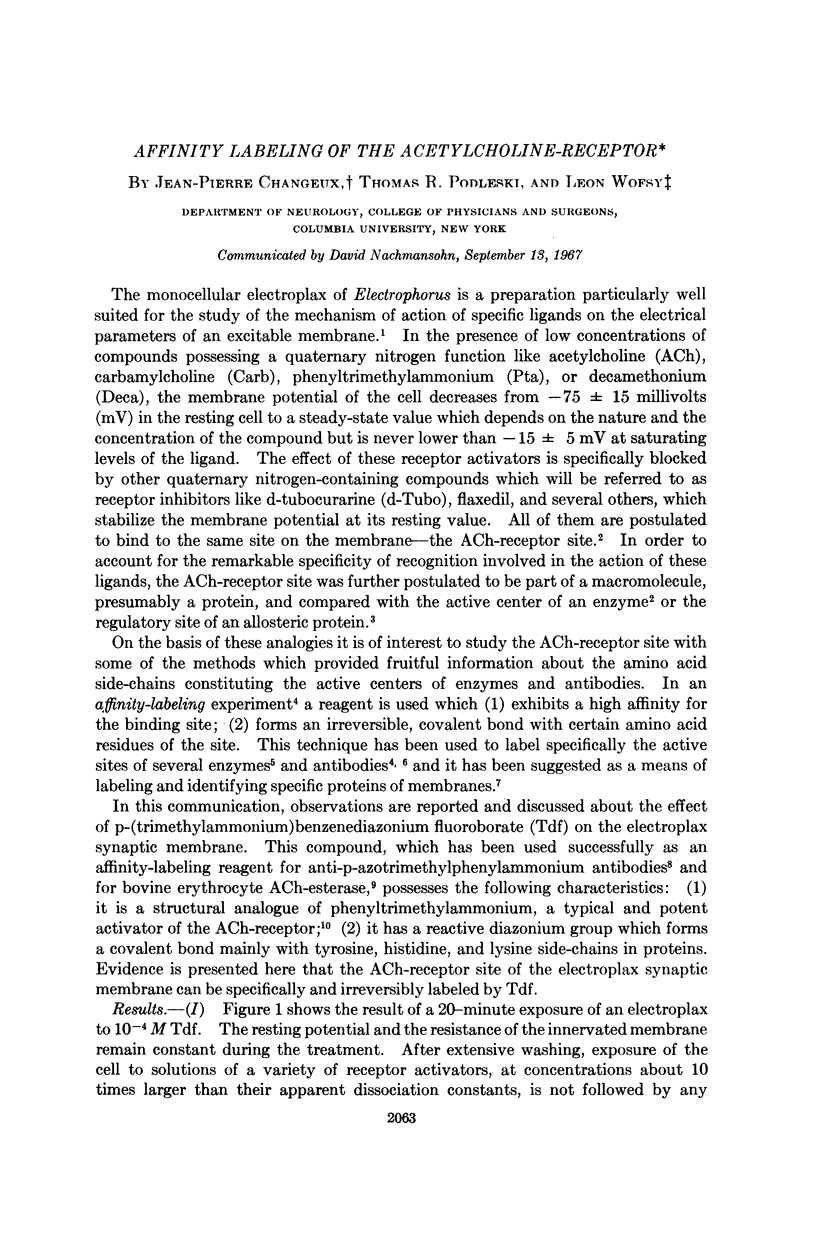
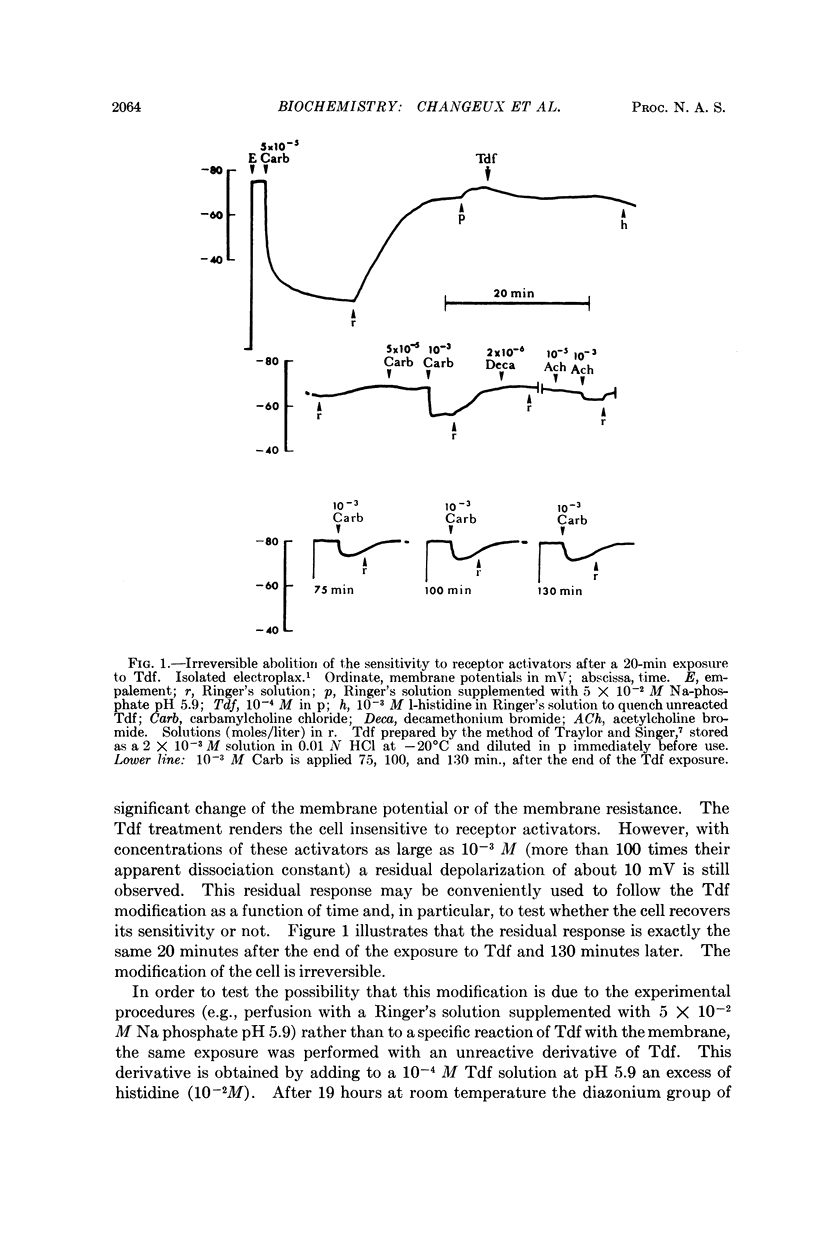
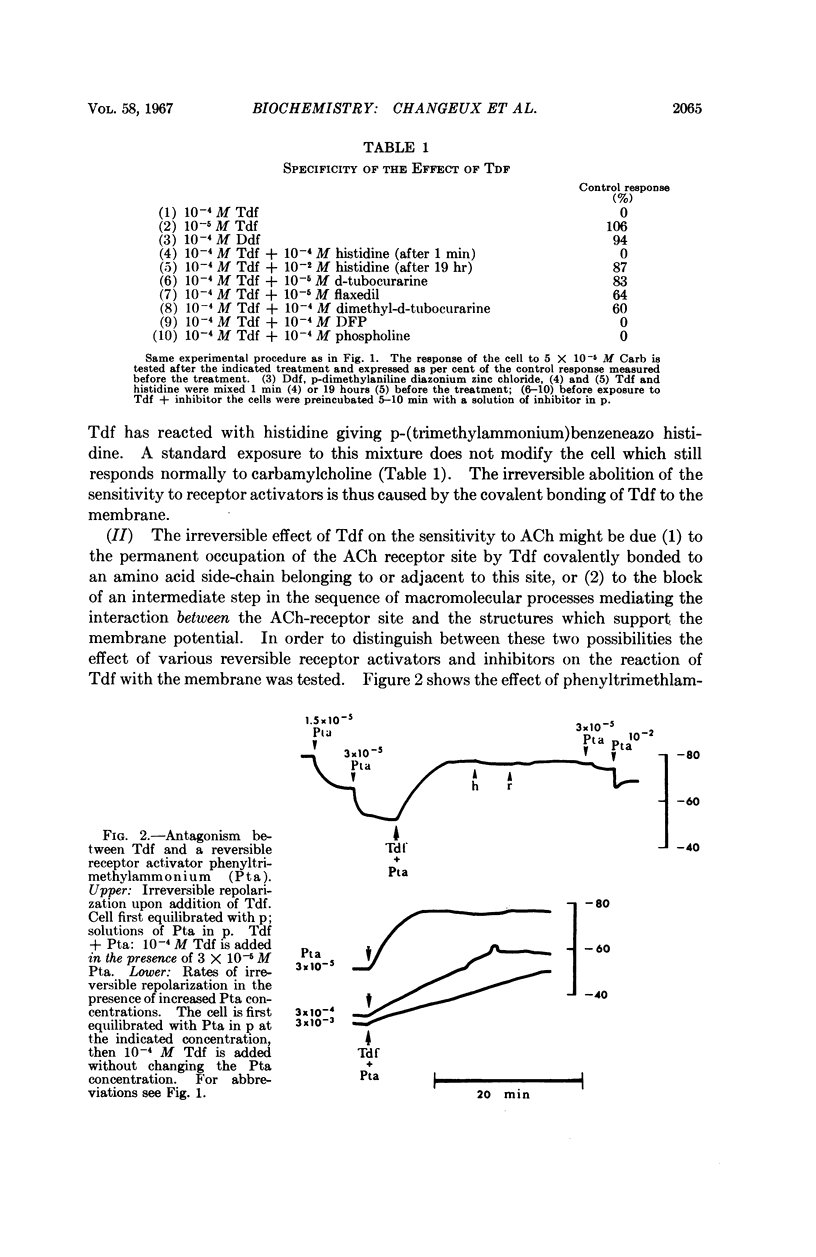
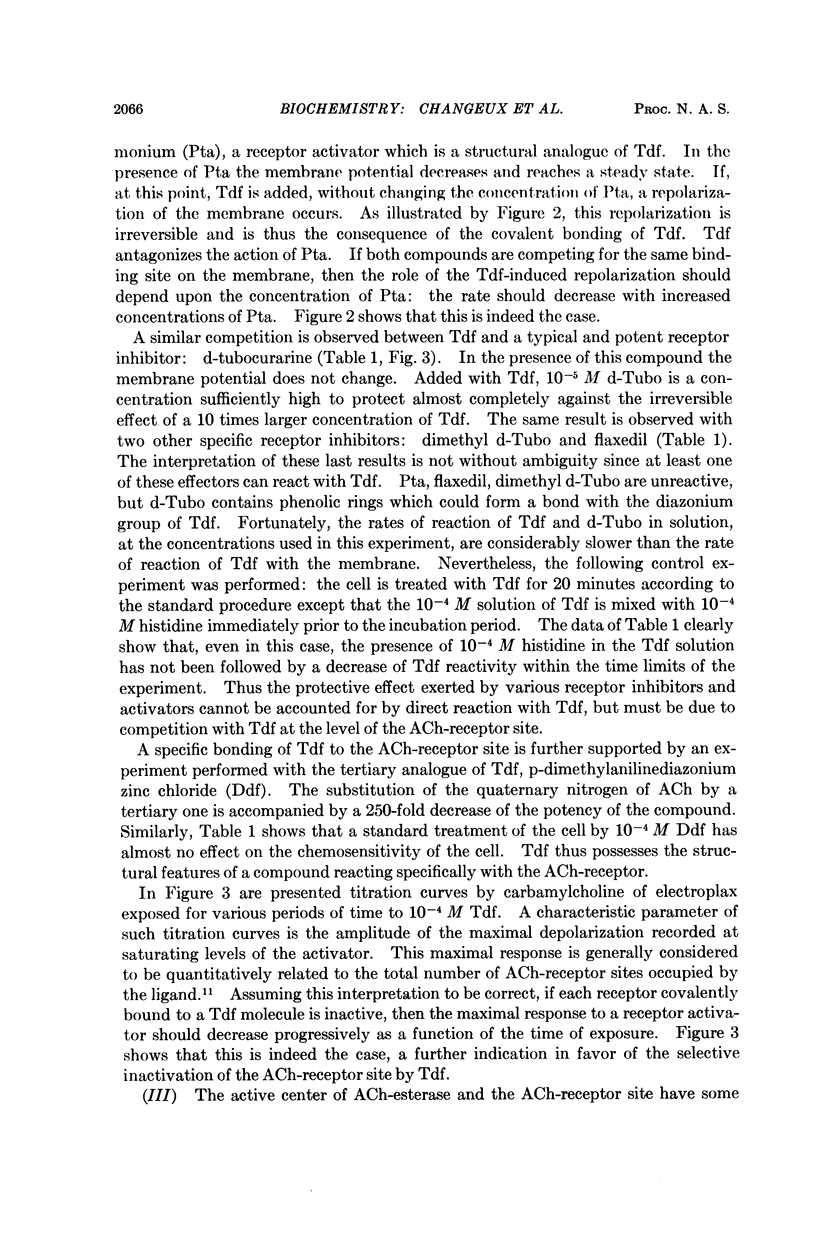
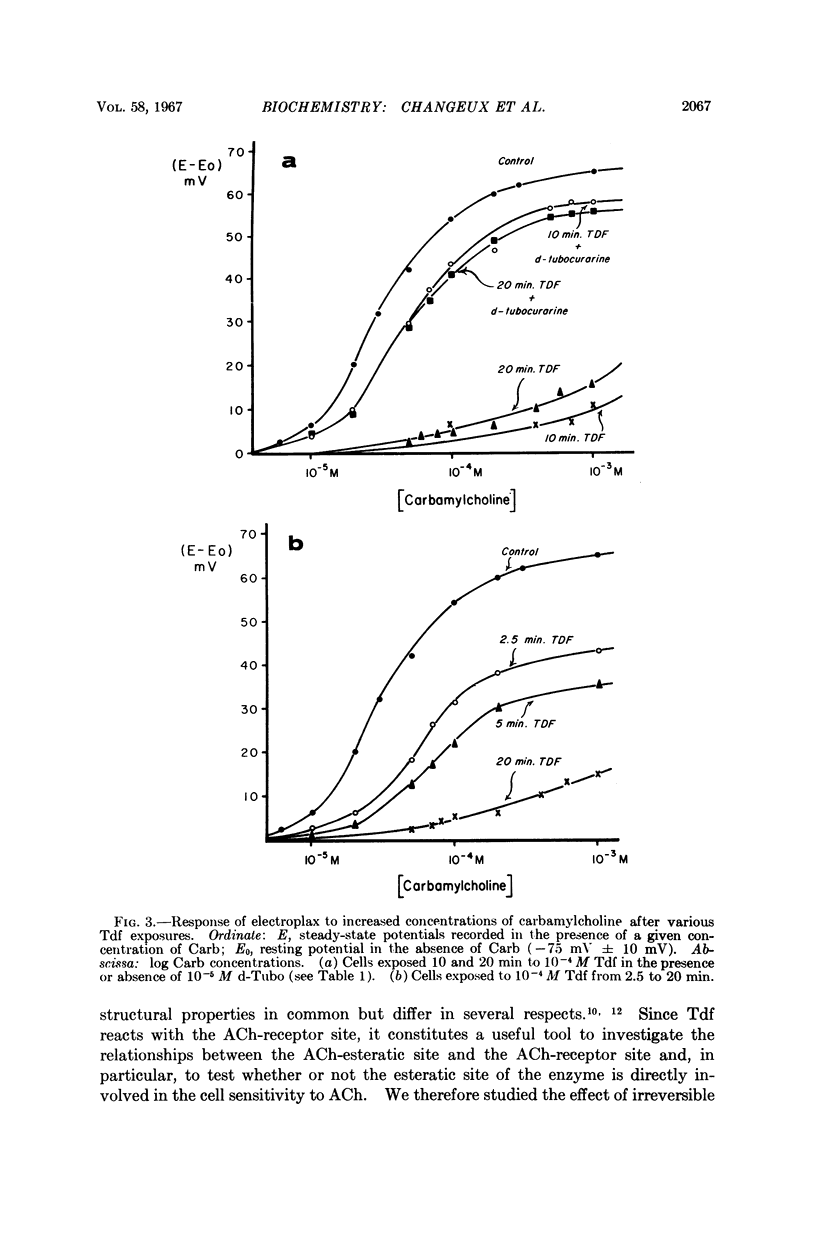
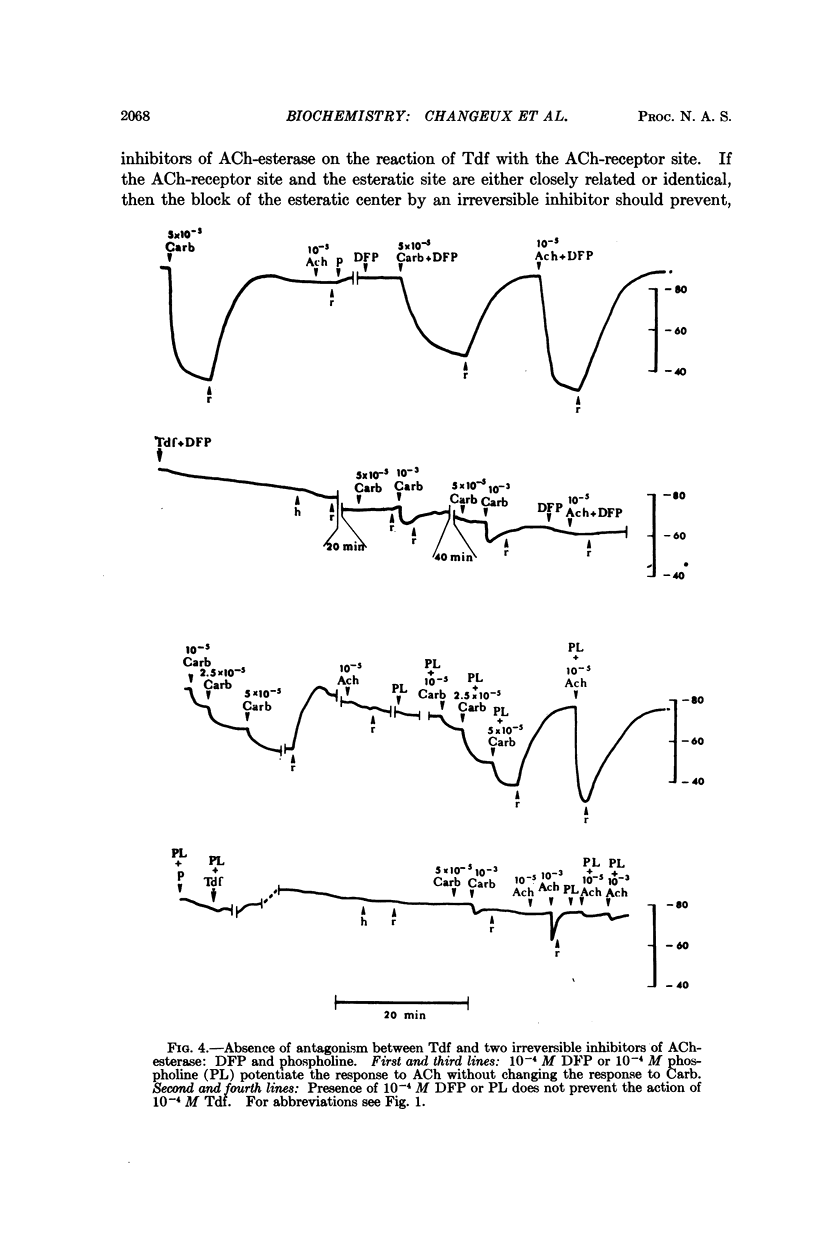
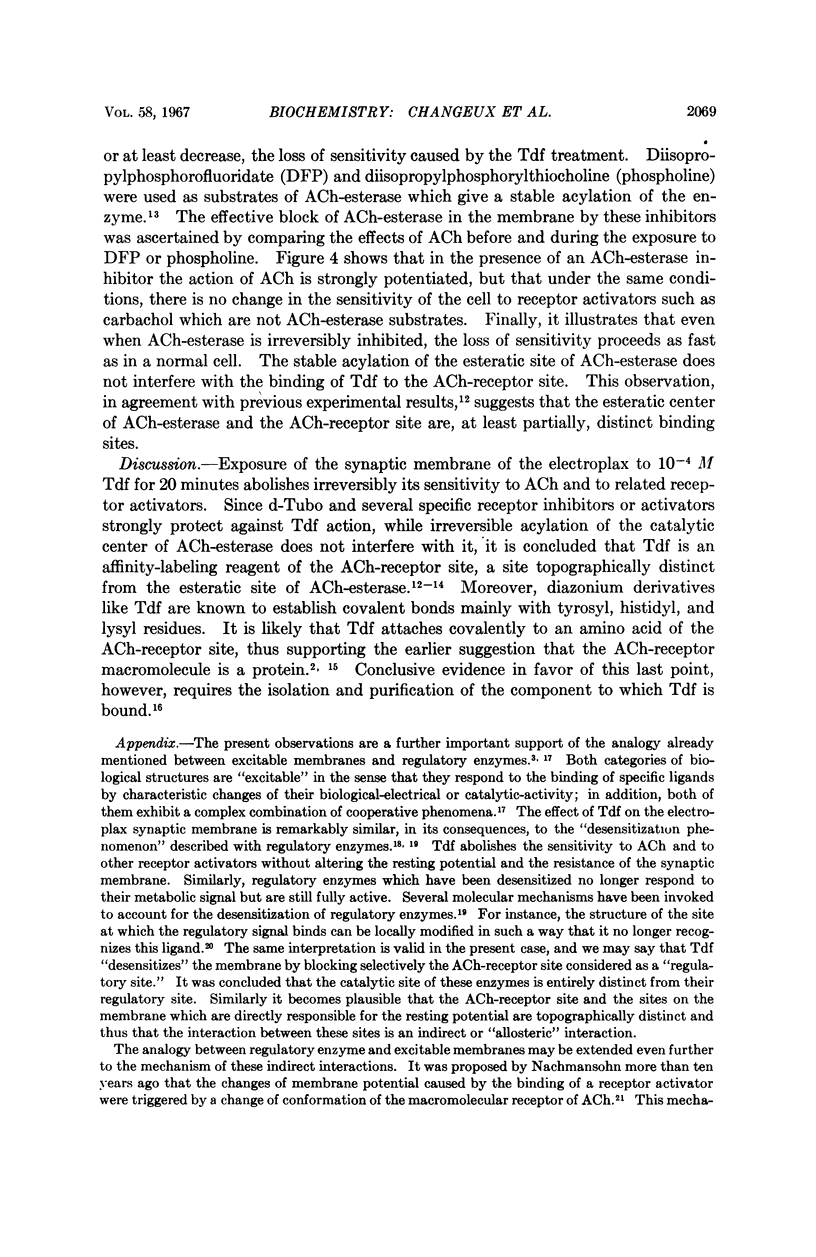
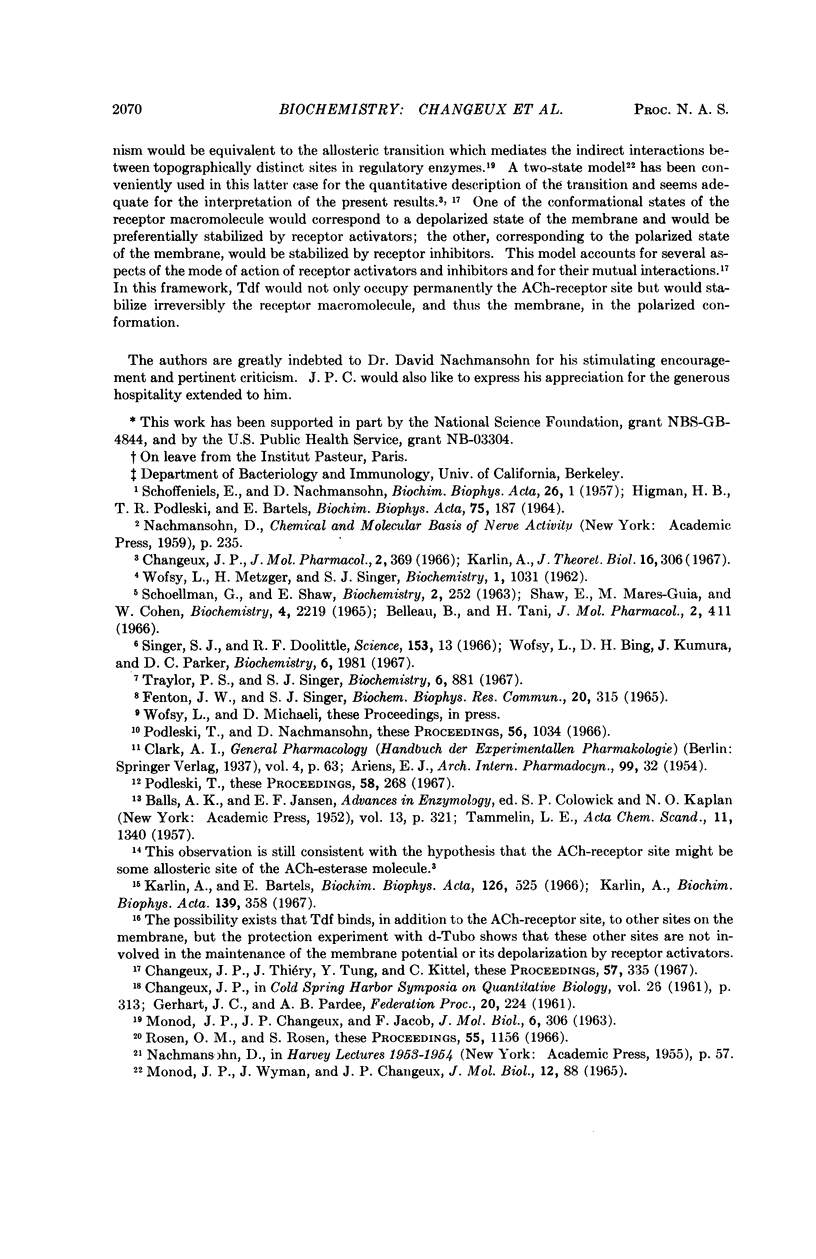
Selected References
These references are in PubMed. This may not be the complete list of references from this article.
- BALLS A. K., JANSEN E. F. Stoichiometric inhibition of chymotrypsin. Adv Enzymol Relat Subj Biochem. 1952;13:321–343. doi: 10.1002/9780470122587.ch8. [DOI] [PubMed] [Google Scholar]
- Belleau B., Tani H. A novel irreversible inhibitor of acetylcholinesterase specifically directed at the anionic binding site: structure-activity relationships. Mol Pharmacol. 1966 Sep;2(5):411–422. [PubMed] [Google Scholar]
- CHANGEUX J. P. The feedback control mechanisms of biosynthetic L-threonine deaminase by L-isoleucine. Cold Spring Harb Symp Quant Biol. 1961;26:313–318. doi: 10.1101/sqb.1961.026.01.037. [DOI] [PubMed] [Google Scholar]
- Changeux J. P. Responses of acetylcholinesterase from Torpedo marmorata to salts and curarizing drugs. Mol Pharmacol. 1966 Sep;2(5):369–392. [PubMed] [Google Scholar]
- Changeux J. P., Thiéry J., Tung Y., Kittel C. On the cooperativity of biological membranes. Proc Natl Acad Sci U S A. 1967 Feb;57(2):335–341. doi: 10.1073/pnas.57.2.335. [DOI] [PMC free article] [PubMed] [Google Scholar]
- Fenton J. W., 2nd, Singer S. J. Affinity labeling of antibodies to the p-azophenyltrimethylammonium hapten and a structural relationship among antibody active sites of different specificities. Biochem Biophys Res Commun. 1965 Jul 26;20(3):315–320. doi: 10.1016/0006-291x(65)90366-9. [DOI] [PubMed] [Google Scholar]
- Good A. H., Traylor P. S., Singer S. J. Affinity labeling of the active sites of rabbit anti-2,4-dinitrophenyl antibodies with m-nitrobenzenediazonium fluoroborate. Biochemistry. 1967 Mar;6(3):873–881. doi: 10.1021/bi00855a031. [DOI] [PubMed] [Google Scholar]
- HIGMAN H. B., PODLESKI T. R., BARTELS E. APPARENT DISSOCIATION CONSTANTS BETWEEN CARBAMYLCHOLINE, DELTA-TUBOCURARINE AND THE RECEPTOR. Biochim Biophys Acta. 1963 Sep 24;75:187–193. doi: 10.1016/0006-3002(63)90597-3. [DOI] [PubMed] [Google Scholar]
- Karlin A., Bartels E. Effects of blocking sulfhydryl groups and of reducing disulfide bonds on the acetylcholine-activated permeability system of the electroplax. Biochim Biophys Acta. 1966 Nov 8;126(3):525–535. doi: 10.1016/0926-6585(66)90010-0. [DOI] [PubMed] [Google Scholar]
- MONOD J., CHANGEUX J. P., JACOB F. Allosteric proteins and cellular control systems. J Mol Biol. 1963 Apr;6:306–329. doi: 10.1016/s0022-2836(63)80091-1. [DOI] [PubMed] [Google Scholar]
- MONOD J., WYMAN J., CHANGEUX J. P. ON THE NATURE OF ALLOSTERIC TRANSITIONS: A PLAUSIBLE MODEL. J Mol Biol. 1965 May;12:88–118. doi: 10.1016/s0022-2836(65)80285-6. [DOI] [PubMed] [Google Scholar]
- Podleski T. R. Distinction between the active sites of acetylcholine-receptor and acetylcholinesterase. Proc Natl Acad Sci U S A. 1967 Jul;58(1):268–273. doi: 10.1073/pnas.58.1.268. [DOI] [PMC free article] [PubMed] [Google Scholar]
- Podleski T. R., Nachmansohn D. Similarities between active sites of acetylcholine receptor and acetylcholinesterase tested with quinolinium ions. Proc Natl Acad Sci U S A. 1966 Sep;56(3):1034–1039. doi: 10.1073/pnas.56.3.1034. [DOI] [PMC free article] [PubMed] [Google Scholar]
- Rosen O. M., Rosen S. M. Chemical modification of the allosteric and catalytic sites of fructose 1,6-diphosphatase. Proc Natl Acad Sci U S A. 1966 May;55(5):1156–1161. doi: 10.1073/pnas.55.5.1156. [DOI] [PMC free article] [PubMed] [Google Scholar]
- SCHOELLMANN G., SHAW E. Direct evidence for the presence of histidine in the active center of chymotrypsin. Biochemistry. 1963 Mar-Apr;2:252–255. doi: 10.1021/bi00902a008. [DOI] [PubMed] [Google Scholar]
- SCHOFFENIELS E., NACHMANSOHN D. An isolated single electroplax preparation. I. New data on the effect of acetylcholine and related compounds. Biochim Biophys Acta. 1957 Oct;26(1):1–15. doi: 10.1016/0006-3002(57)90047-1. [DOI] [PubMed] [Google Scholar]
- Singer S. J., Doolittle R. F. Antibody active sites and immunoglobulin molecules. Science. 1966 Jul 1;153(3731):13–25. doi: 10.1126/science.153.3731.13. [DOI] [PubMed] [Google Scholar]
- WOFSY L., METZGER H., SINGER S. J. Affinity labeling-a general method for labeling the active sites of antibody and enzyme molecules. Biochemistry. 1962 Nov;1:1031–1039. doi: 10.1021/bi00912a013. [DOI] [PubMed] [Google Scholar]
- Wofsy L., Kimura J., Bing D. H., Parker D. C. Affinity labeling of rabbit antisaccharide antibodies. Biochemistry. 1967 Jul;6(7):1981–1988. doi: 10.1021/bi00859a015. [DOI] [PubMed] [Google Scholar]


